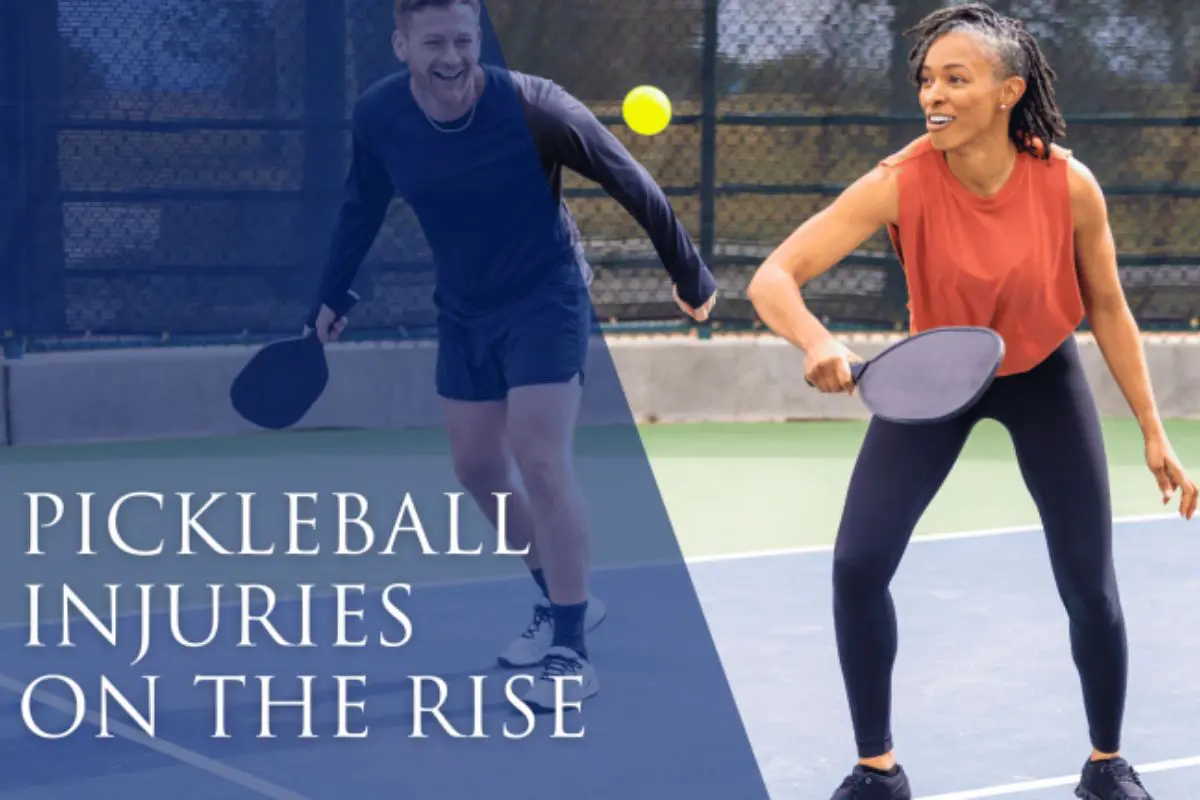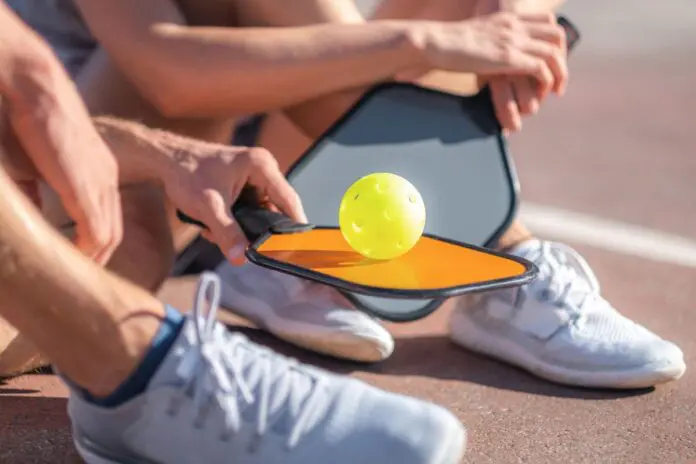Playing Pickleball While Injured: Pickleball’s addictive nature can lead to injuries despite the best efforts to prevent them. When injuries occur, it’s essential to work closely with a healthcare professional. Rest is crucial, but some drills and exercises can help players stay sharp while recovering.
Drills to Improve While Injured
Watching Professional Pickleball Films
Studying professional pickleball matches can provide valuable insights, especially during recovery periods when physical practice may be limited. Players should select a specific shot to analyze, such as a pro’s crosscourt slice backhand dink, and observe the technique and footwork.
Additionally, watching full matches helps in understanding game strategy and decision-making. Analyzing how players adjust their play from different match points provides strategic insights that are crucial for improving game understanding and planning.
Hand Speed Against a Wall
For players dealing with leg injuries, focusing on upper body drills is a viable option. One effective exercise involves using a wall to enhance hand speed. Players should find a smooth surface like a concrete wall or a backboard. Start by standing about seven feet from the wall, the approximate length from the kitchen line to the net.
Begin with gentle volleys, ensuring that the ball returns to the player to avoid unnecessary movement. Once comfortable, incorporate various patterns, such as alternating between forehand and backhand volleys. As proficiency increases, players should gradually increase the speed of the ball and move closer to the wall. This exercise boosts hand speed and prepares players for fast-paced situations.
Low Lunge Dink Shadow Strokes
For those with wrist or elbow injuries, focusing on footwork and dinking through shadow strokes can be beneficial. Players should set up in the kitchen area, or create a makeshift kitchen in a space like a garage. Start by practicing side-stepping the width of the kitchen and performing shadow dinks without the ball.
The focus should be on proper footwork and lunging, particularly through the right leg for right-handed players. Avoid crossing legs and use a timer to practice both forehand and backhand dinks. This drill improves footwork and maintains sharpness in dinking techniques while minimizing strain on the injured arm.
Prevent Pickleball Injuries
Ankle Sprains Prevention
Ankle sprains are prevalent in pickleball due to frequent running and sudden movements. Immediate treatment involves icing, compression with an elastic bandage, and elevation. Heel raises are a recommended exercise to strengthen the ankle stabilizers and reduce the risk of future injuries.
Knee Strain Prevention
Knee strains, often worsened by arthritis, can occur due to twisting and pivoting movements. Immediate care includes icing and the use of an elastic bandage or knee brace. To prevent knee injuries, side-lying leg lifts can strengthen the entire leg, thereby protecting the knees.
Pulled Hamstring
Pulled hamstrings are common when players don’t warm up properly. Stretching the hamstrings through exercises like hamstring stretches can prevent these injuries. This warm-up involves extending one leg forward and bending the opposite knee while leaning forward to stretch the back of the thigh.
Tendonitis
Tendonitis, resulting from repetitive stress, often affects the wrist, elbow, or shoulder. Rest and ice are critical for recovery. To prevent tendonitis, players should avoid overuse and allow rest days between sessions. Strengthening exercises and proper technique can also help manage and prevent this condition.
Injuries Related to Falls
Falls can lead to hand, wrist, and shoulder injuries, or even concussions. Immediate attention should be given if significant pain occurs or if symptoms like blurry vision or confusion arise. Single-leg balance exercises can improve overall balance and help prevent falls.
Injuries, while unfortunate, offer an opportunity to focus on different aspects of pickleball and improve one’s game. By incorporating specific drills and exercises tailored to the type of injury and adhering to professional medical advice, players can continue to develop their skills and prepare for a strong return to the court.

News in Brief: Playing Pickleball While Injured
Injuries, common in pickleball despite preventive measures, require close attention and tailored recovery strategies. Players with leg injuries can improve hand speed with wall volleys, while those with wrist or elbow issues should focus on footwork and shadow dinks. Watching professional pickleball films can also enhance understanding of techniques and strategies during recovery. To prevent pickleball injuries, players should address common issues like ankle sprains with icing and heel raises knee strains with side-lying leg lifts, and pulled hamstrings with proper stretching. Tendonitis should be managed with rest and strengthening exercises, and falls should be addressed with balance exercises. Adhering to these strategies helps players stay sharp and prepare for a return to the court.
ALSO READ: North Elba Pickleball Courts Nearing Final Stages, Excitement Builds
